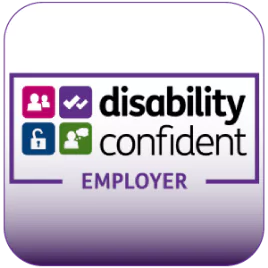Flexibility in the workforce arguably became one of the ‘key phrases of the pandemic”. As employers and employees faced the first round of lockdowns and working from home became the norm, it soon became apparent that remote working can really benefit organisations and employees alike.
Since the lockdown ended, people have slowly begun to return to the office. While some firms like Apple and BT have talked of mandating workplace returns, hybrid setups have emerged as the dominant way of working.
But what impact has this had on talent attraction and retention, and how will flexible working arrangements change in the future?
Flexible and hybrid working
In our recent joint research report with the CIPD (the professional body for HR and people development), it was apparent that flexibility at work is a priority for recruitment. Of the 1,000+ HR professionals surveyed in the Resourcing and Talent Planning Report 2022, 69% revealed that at least some of the jobs they advertised were listed as open to flexible working, while one in five promoted all roles as flexible to some degree.
When we look at the comparisons from 2021 to 2022 data, the number of respondents that felt flexibility at work was the most effective way to attract candidates increased by six percentage points. A further 68% highlighted that offering different types of flexible and hybrid working had allowed their business to attract and retain more talent. When we consider that 70% also felt that competition for highly qualified talent has increased in the last year, offering flexible working clearly has its benefits.
Claire McCartney, senior resourcing and inclusion adviser for the CIPD, agreed with this sentiment:
“The pandemic showed the positive impact flexible working can have for both employees and organisations and our research continues to show that candidates increasingly look for flexible working during their job hunt. Greater availability of flexible working is usually a low-cost option for employers looking to improve their benefits package, and businesses can also reap the rewards through improved job satisfaction, loyalty and business flexibility.”
The impact on talent retention
Allowing employees to choose how and where they work also has its benefits for talent retention. Developing a workplace culture that enables employees to feel more in control of their own working hours, allows a better work life balance and helps people to work in their preferred way, which will only bolster employees happiness and productivity.
In the Resourcing and Talent Planning Report 2022, 45% of HR professionals revealed that flexibility in the workforce had increased productivity across their business while 35% stated that it had a positive impact on engagement.
With flexibility clearly bolstering talent attraction and retention, it’s perhaps no surprise to note that most firms are planning to at least maintain current levels of hybrid working, with a number planning to increase flexible work options. Nearly a quarter of those surveyed in the CIPD report stated that hybrid and remote working will grow over the next year, while almost two thirds expect it to remain the same.
With flexible working clearly here for the future, how can HR practitioners drive best practice hybrid working standards that support talent attraction and retention?
Flexibility in the workplace: top tips
- Be mindful of the forms of flexible working: There are several forms of flexible working that people can benefit from – flexibility isn’t just about working between the office and home. Job shares, working compressed hours and work from anywhere all fall under the flexible working remit. Make sure employees are aware of the different ways they can work and encourage people to share their flexible working needs with managers to ensure employees remain engaged.
- Discuss rather than mandate: While there have been firms mandating returns, it’s important to take a collaborative approach when designing workplace strategies. Get your people involved in the conversation to not only get their buy-in, but also ascertain how they feel they can work to their best abilities. Not everyone will want to work in a hybrid manner, so delving into what they really want will help inform more impactful working strategies.
- Communicate with employees: Just as communication was key during the initial lockdown period, encouraging a two-way dialogue will be hugely valuable in keeping flexible working practices up-to-date for employees. People’s circumstances can change quickly, just as the economy can also change course swiftly. Creating an environment where communication is encouraged will help HR practitioners respond and adapt quickly, limiting potential increases in attrition rates.
- Build flexibility into onboarding and recruitment: Flexible working does come with its challenges, particularly when it comes to recruiting and onboarding new starters. It’s important to factor flexibility into the early stage of the talent lifecycle to ensure they experience the culture you’re trying to convey from the beginning. However, successful implementation of remote hiring and onboarding does require interviewer and manager training to allow them to do their job effectively.
- Develop and review internal policies: Finally, it’s important to develop internal policies that are suitable for the new way of working. Structures put in place during the pandemic are no longer relevant. New policies and practices that allow employees to request flexible working at any time, ensure job adverts specify the range of working options on offer and allow for the effective management of remote workers will be needed to manage the new flow of the workforce.
Download your copy of the Resourcing and Talent Planning Report 2022 today to find out how other firms are adapting to the new talent landscape.









